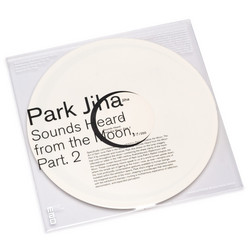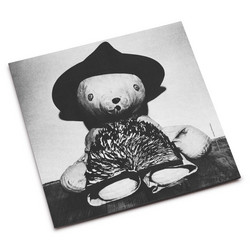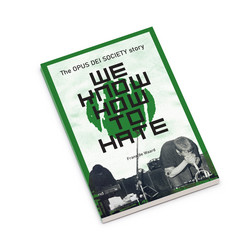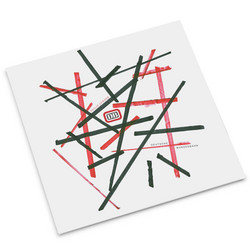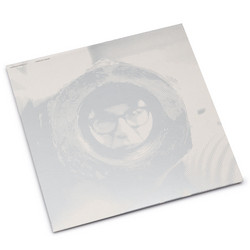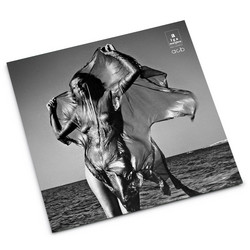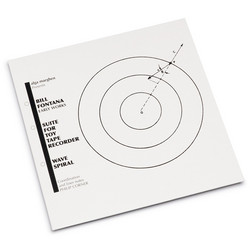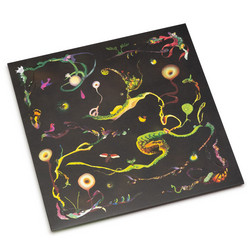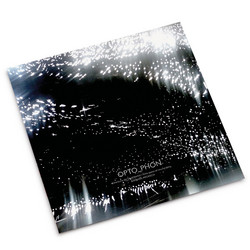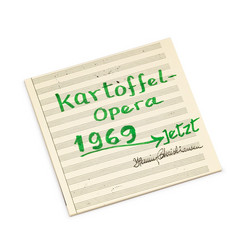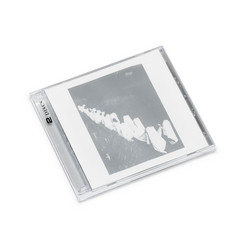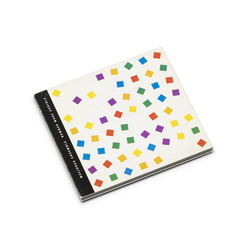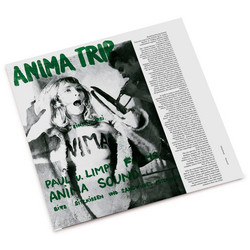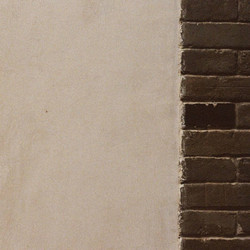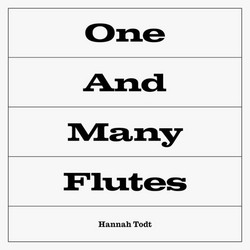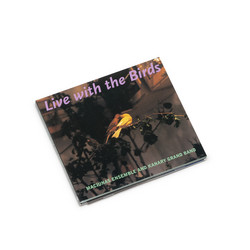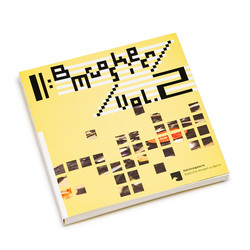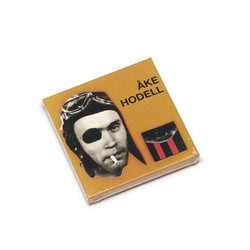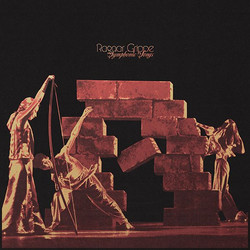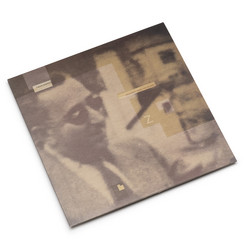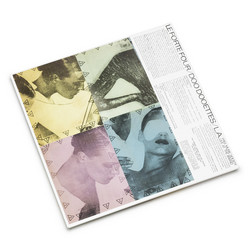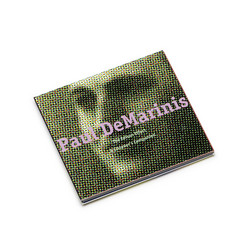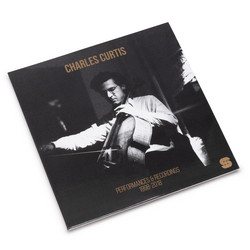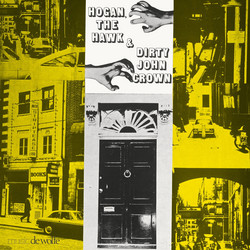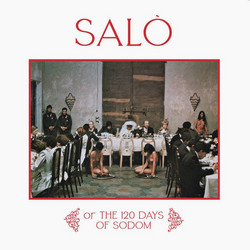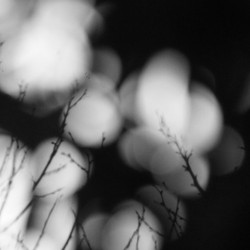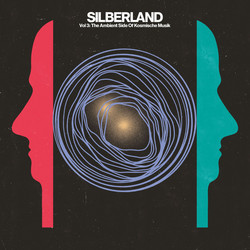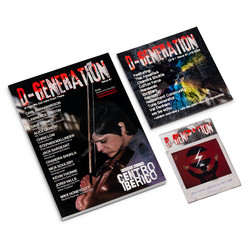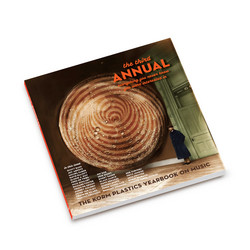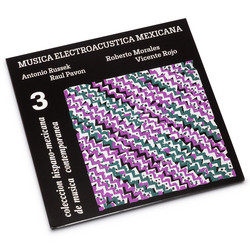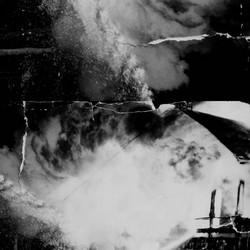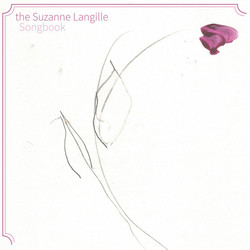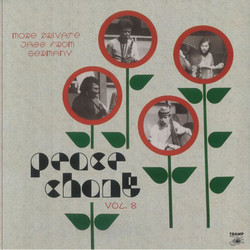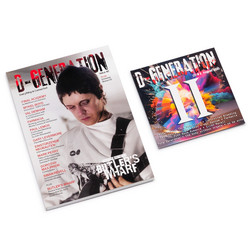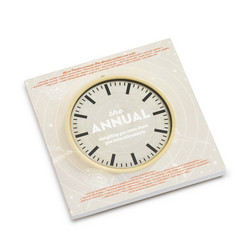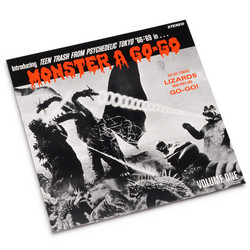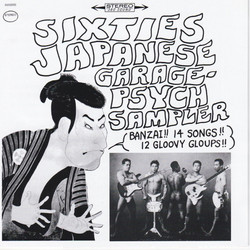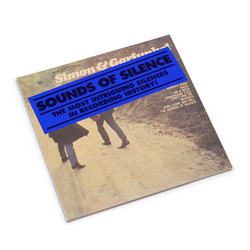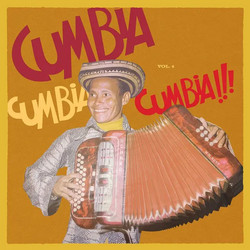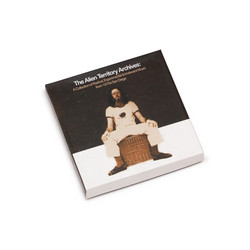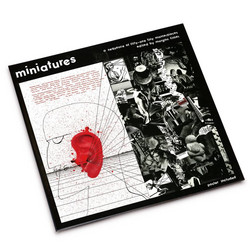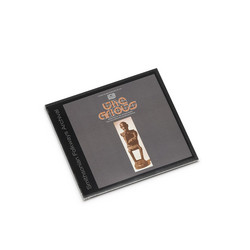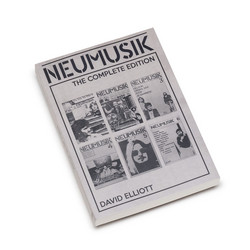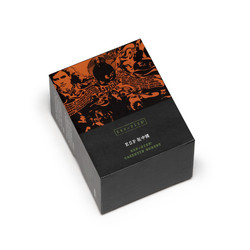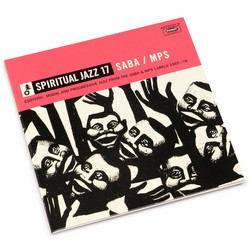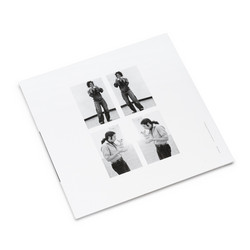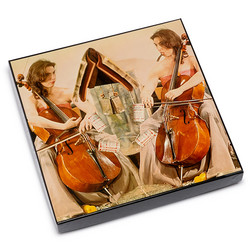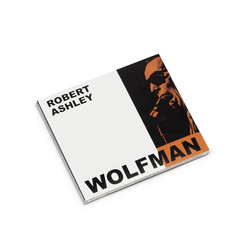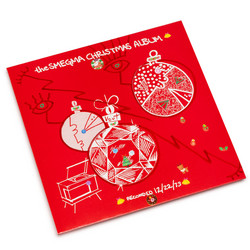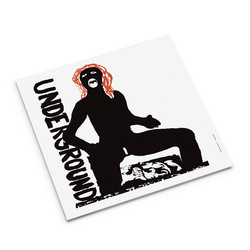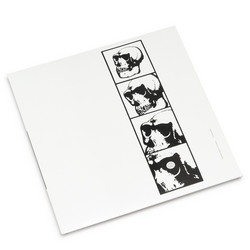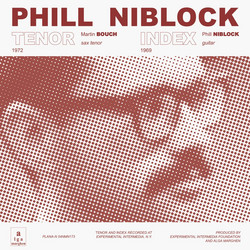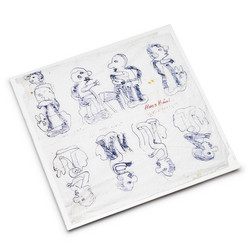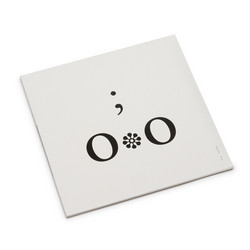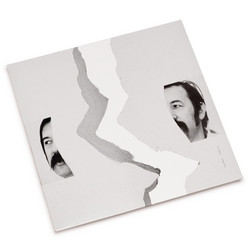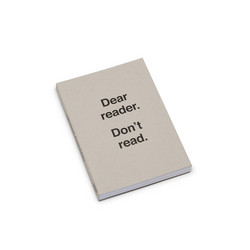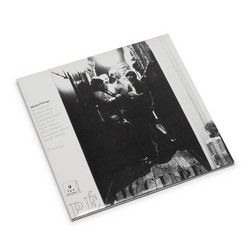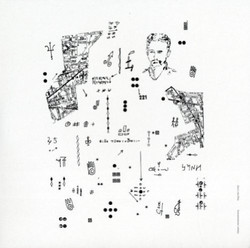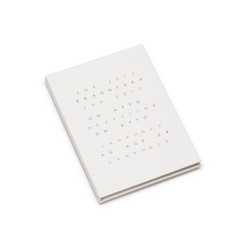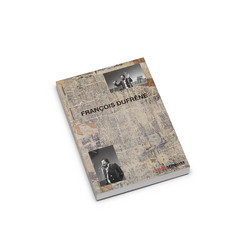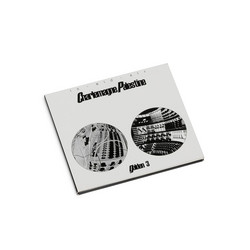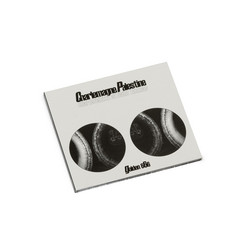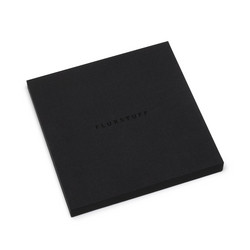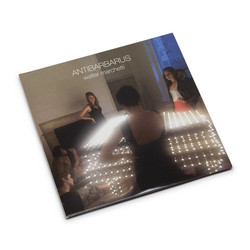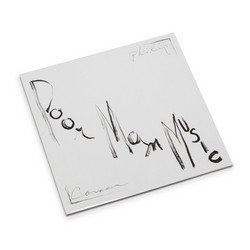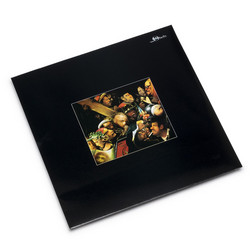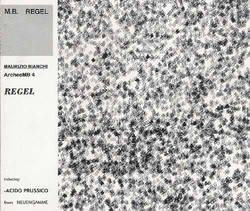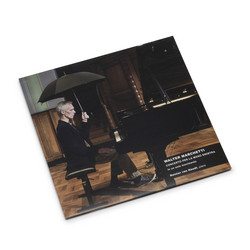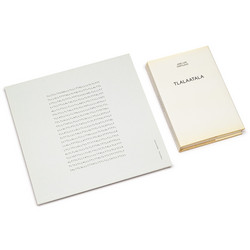Various
Oeuvres Sonores (7LP Box)
Alga Marghen is proud to present one of the year's most extraordinary and limited releases: the "Oeuvres sonores" box set, a numbered edition of only 29 copies documenting a series of historic events held at the Centre Pompidou in Paris. This monumental collection of 7 LPs gathers some of the most significant works of international sound avant-garde, originally presented during the Oeuvres sonores presentations at Centre Pompidou. The box includes works by Charlemagne Palestine, Luc Ferrari, Brunhild Meyer-Ferrari, Eliane Radigue, Walter Marchetti, and the exclusive recording by Charlotte Moorman with Nam June Paik and Ornette Coleman.
The box's content is extraordinary: Palestine's "Sound 1" documents his early research into "Golden Sonority" through sine tone generators and modular synthesizers. Ferrari's "Labyrinthe de violence / Danse" presents minimal sonorities built around electronic drones and deconstructed electric organ sequences. Brunhild Meyer-Ferrari's "Tranquilles impatiences" explores improvisation through separate tapes created by her husband Luc. Radigue's "Jouet electronique / Elemental 1" captures her first feedback experiments in Pierre Henry's studio. Marchetti's double LP "de musicorum infelicitate" presents ten painful variations on the condition of contemporary music.
The most precious element is Charlotte Moorman's LP "Concerto for TV Cello and Videotapes", available exclusively in this box. This is a live recording of the famous TV Cello designed by Paik, featuring a tape collage prepared by Ornette Coleman specifically for Charlotte. Each LP also includes previously unpublished press releases by Centre Pompidou, while the box contains six publications ("OS1" through "OS6") with rare photos, complete autobiographies, and extensive documentation of these groundbreaking presentations. A crucial document of radical sonic practice that pushes the boundaries of composition, improvisation, and sound art. Issued in an edition of 29 numbered copies, this collection represents a once-in-a-lifetime opportunity to own some of the most important unreleased works from the electronic and electroacoustic avant-garde.
_______________________________________________________
Charlotte Moorman "Concerto for TV Cello and Videotapes"
(cat No. plana-M alga014)
LP Record
edition of 29 copies
First ever vinyl edition of the TV Cello recordings, issued in an ediiron of 29 copies only to be included in the “Oeuvres sonores” boxset. Of the famous TV Cello—conceived by Paik for Moorman as a 'living sculpture'—this LP offers an in situ recording realised on one of the three days inaugurating the Paik retrospective at the Museum of Contemporary Art in Chicago, on 11, 12 and 14 September 1982. This LP contains the “Concerto for TV Cello and Videotapes”, largely improvised, "including a tape collage by Ornette Coleman prepared for Charlotte. 4-color sleeve with the image from the “Oeuvres sonores” series.
Charlemagne Palestine "Sound 1"
(cat No. plana-P alga026)
LP Record
Original first press of 200 copies. As the title well underlines, "Sound 1" electronic sonority is a starting point in Charlemagne Palestine researches for the Golden Sonority. Previously unpublished, this radical and foundamental work has now been released on LP record in collaboration with the New Media Dept of Centre Pompidou (National Museum of Modern Art) in Paris for the first "Ouvres sonores" event, December 15th, 2008.
Charlemagne Palesitne started to dream of an expressive continuous evermoving everchanging sound form; an enormous sonorous 3-dimensional sculptural canvas in mid-air, using electronically produced sounds. At first he began experiments with simple sine tone generators emitting the purest sound waves without any overtones. Then, gradually, with access to moog and arps, he constructed sounds using the sine / sawtooth / square wave oscillators in a fluid everchanging mix of adding or filtering overtones and white noise to create sonorities constantly changing timbres and weight. Palestine experimented in this way from 1964 till 74 in NYC and then, in California, finally he assembled his own drone machine of 16 ultra stable oscillators designed by Serge Tcherepnin and 4 band pass filters designed by Donald Buchla. He would build up a sound, oscillator by oscillator, then add ever so slightly to the oscillator imput, tiny increments of white noise that would gradually make the sounds thicker and thicker untill they were immense sacred machines humming like gargantuan tibetan bees. Charlemagne played them very very loud, making all the room and objects in it resonate while outside all was quiet and sleeping. He worked like a painter with a palette and a canvas and he mixed and added and mixed and added over, entire nights, mixing adding and then lying on the mattress and listening and fine tuning. Finally, at a certain point, after several nights, the sonority seemed ready to record. He'd put on the tape, prepare the tape machine with the proper level as not to overload it and record the texture.
Luc Ferrari "Labyrinthe de violence / Danse"
(cat No. plana-F alga027)
LP Record
Original first press of 200 copies. Ultra limited release: "Danse" was part of a sound/visual installation called "Labyrinthe de violence". Previously unpublished, this radical experimental work has now been released on LP record in collaboration with the New Media Dept of Centre Pompidou (National Museum of Modern Art) in Paris for “Œuvres sonores 2”, a 2-day-event organised by Emanuele Carcano at Beaubourg on April 5th & 6th, 2009. "Labyrinthe de violence" was an installation for tape sounds and 2 slide projectors conceived in 1975 by Luc Ferrari. The installation was a visual and sound metaphore of violence within contemporary civilised society. Four different rooms with a central space created the spacial context of this work. The specific environmental sonority (1. "Violence"; 2. "Pollution"; 3. "Profit"; 4. "Mechanism" / "Paysage" / "Danse") created for each of the four rooms naturally superposed themselves in the central space. "Danse" was one of those sonorities minimally constructed using 2 different sounds: a very low electronic drone deeply resonating for the whole duration with, in the end, the accumulation of deconstructed sequences played by Luc Ferrari on an electric organ. Documenting one of Luc Ferrari most beautiful and mysterious sonic works, this LP edition will be the first in a series of alga marghen projects presenting a still undiscovered side of the poetical universe of this foundamental composer.
Brunhild Meyer-Ferrari "Tranquilles Impatiences"
(cat No. plana-MF alga028)
LP record
Original first press limited to 300 copies. Alga marghen proudly presents the first record edition ever by Brunhild Meyer-Ferrari, a very refined and talented german composer, wife of Luc Ferrari with whom she collaborated for over 40 years in creating some of the most beautiful sound works ever created in the past decades. First there was "Et tournent les sons dans la Garrigue" that Luc Ferrari composed in 1977 before "Exercises d’Improvisation" in the same year (a previous unreleased work, soon to be issued on the PLANAM label). These two pieces "...conceived for individual or collective improvisation for any instrument or instrumental group..." are based on identical sound elements. "Exercises d’Improvisation" consists of a sequence of 7 separate tapes, while for "Et tournent les sons dans la Garrigue" Luc Ferrari mixed these tapes into one. Listening to the separate tapes Brunhild Meyer-Ferrari felt the irresistible desire to compose a new piece using ad libitum five of these seven tapes.
As she remarked: "Impatiences represents for me those high-pitched rhythmic sounds, those imperturbable wriggling interfering with the low rhythms which are falsely quiet, because each of them is submitted to different and contradictory rhythms. I wished these to be perturbing enough to make the physical balance stagger by fractions of seconds".
Edition limited to 300 copies, issued by alga marghen to celebrate the "Oeuvres sonores 3" event conceived in collaboration with the New Media Department of Centre Pompidou and La mason rouge, Fondation Antoine de Galbert in Paris. This LP is the third in the "Oeuvres sonores" series after the now sold out Charlemagne Palestine "Sound I" LP and Luc Ferrari "Danse" LP.
Eliane Radigue "Jouet Electronique / Elemental I"
(cat No. plana-R alga029)
LP Record
Original first press of 200 copies. alga marghen proudly presents the new edition of two sublime pieces by Eliane Radigue, “Jouet Electronique” (1967) for feedback on magnetic tape and “Elemental I” (1968) for feedback of natural sounds on magnetic tape. This LP was first issued in 2010 on the occasion of an alga marghen presentation at Centre Pompidou in Paris and included in the series of publications connected to the Oeuvres Sonores events. We thought, after a long time this wonderful record was sold out, it’s time now to have it available again, presenting it for the first time with it’s own specific artwork and layout.
Both works were recorded at Pierre Henry's Studio Apsome in Paris. Between 1967 and 1968, Eliane Radigue was the assistant of Pierre Henry in his studio, mainly for the editing of “L'Apocalypse de Jean”. He also put her in charge of organizing his sound archive according to different criteria. It was endless work - there were incredible sounds, a true sound library! Eliane Radigue really enjoyed doing this work, even if it took a long time. So, sometimes she decided to set the machines of the studio to do some little work on her own. “Jouet Electronique” and “Elemental I” were born this way as a kind of recreation during her time as a studio assistant.
Working with feedback is something that Eliane Radigue learned through Pierre Henry. Do you remember “Voyage”? There's that fluid part which is made of feedback constructed with a microphone. Everything had to be set at a precise distance from the loudspeakers because that is the specific problem with feedback - you have to be at the right distance. Afterwards, these high tone recordings were slowed down in order to discover the deeper character of their color. This work with feedback was in the end quite limited and the composer preferred working with two reel tape machines to produce sounds. The first was set on the recording mode while the other was playing and it was the accidents happening in this phase that made the feedback richer. With some fine-tuning you could reach very beautiful results: low pulsations, very high-pitched sounds - sometimes both at the same time - or long sounds. All of these sounds could be slowed down or accelerated, which gave her a beautiful material to work with.
With “Jouet Electronique” Eliane Radigue had a lot of fun, hence the title. As far as “Elemental I” is concerned, it was the first attempt at something which was very important to her based on the theme of the basic elements: water, fire, air and earth. Eliane had the chance to record in open air thanks to a small Stella Vox that Arman gave her in the beginning of the 1960s. At the time she was still living in Nice and every now and then she went for a walk to do some recordings of the sea, the wind, the rain, the fire - Eliane Radigue continued this way to build her very minimal sound library, consisting of not more than ten reel tapes. This was the starting point and in 1968 she used these recordings for her work with two reel tape machines.
Edition of 200 copies, with liner notes by Eliane Radigue and portrait photos by Arman.
Walter Marchetti "De musicorum infelicitate"
(cat No. plana-M Alga015B)
2LP record + inserts
Original first press limited to 70 copies. Walter Marchetti “De musicorum infelicitate" is now presented in a new 2LP edition limited to only 70 copies, issued to celebrate the sound installation created for the Oeuvres sonores 6 event conceived in collaboration with the New Media Department of Centre Pompidou in Paris. This new edition also includes the Centre Pompidou 16-page program as well as a copy of the now sold out Bullshit Detector magazine published by Fondazione Mudima in 2001 on the occasion of the Walter Marchetti installation in their art space.
“De Musicorum infelicitate” (i.e., “The Unhappiness of Music”), or “Ten Pieces in the Form of Painful Variations” dispose in their unceasing and implacable sequence the landing at an anaphorical finis terrae, the extreme and impassable threshold, beyond which music can but sink in the abyss of its own loss of consciousness, in front of the horizon of the definitive loss of its exhausted tradition. “De musicorum infelicitate”, anamnesis of the condition of music, a barren aesthetic code ineluctably suspended between self-mystification and expression of the inauthentic, having reached the limit of its own fertility and every faculty of the imagination. “De musicorum infelicitate”, longing for a magniloquent destructio musicae, the destruction of an administrated practice, of a tautological exercise devoid of inner necessity. As Gabriele Bonomo, the project coordinator of the complete Walter Marchetti editions for Alga Marghen, remarks in the liner notes, music has been reduced to leading a ghostly existence, haunting the cemetery of history and frustrated by the impossibility to adhere to itself; if only music were able to recognize its own superfluity it could fulfill its destiny. While listening to these “Ten Pieces in the Form of Painful Variations”, each one with the precise duration of six minutes, you will realize that music, this extremely dense sonority close to the pulverization limit, is talking about itself.
